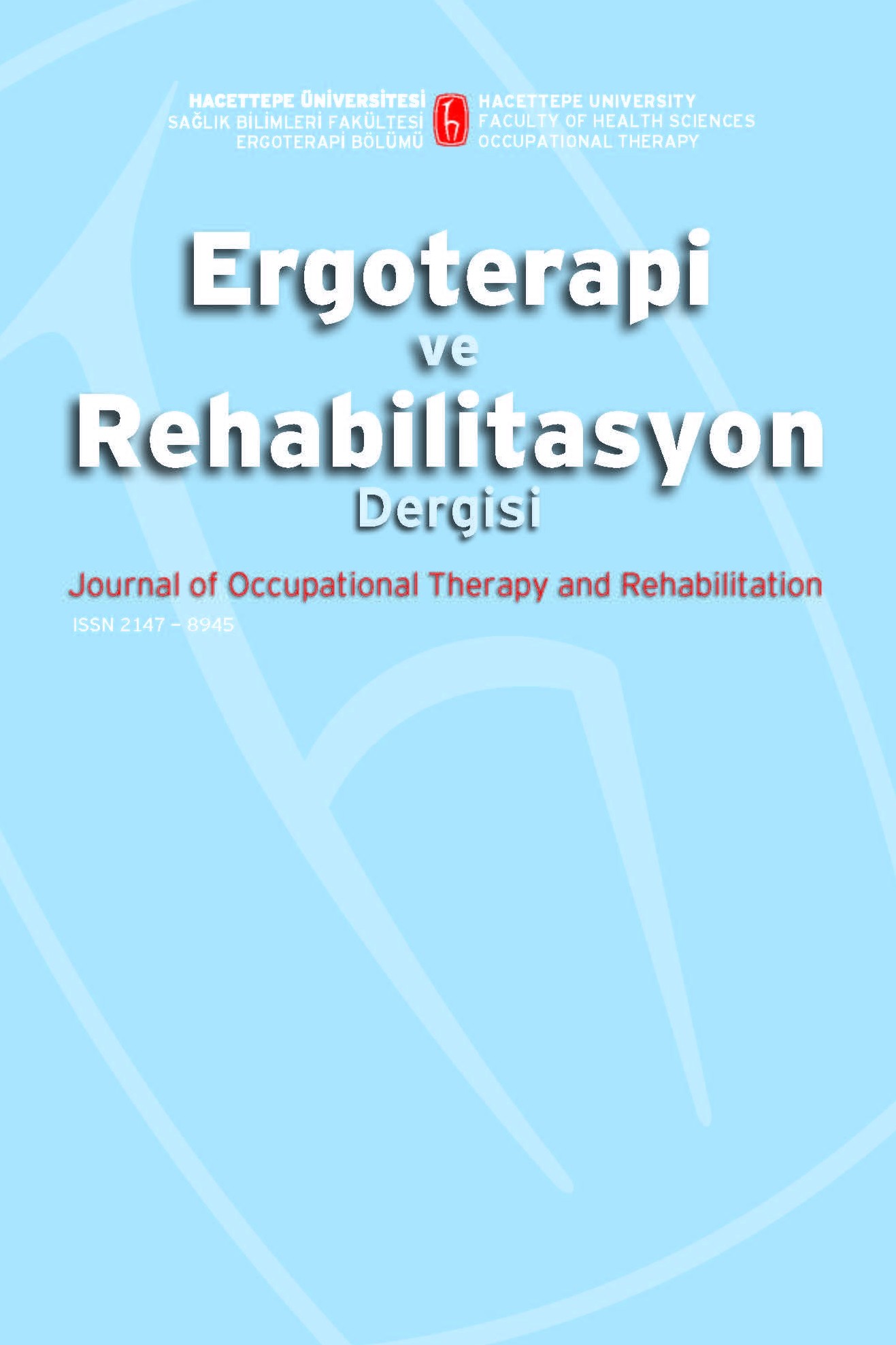İran Ergoterapistlerinde Tükenmişlik ve Etkili Faktörlerin Araştırılması
Amaç: Zaman içinde yaşanan yüksek düzeyde iş stresi yanı sıra kişisel hayal kırıklığı ve yetersiz başa çıkma becerileri, tükenmişlik olarak bilinen sendroma yol açabilir. Çeşitli araştırmalarda yüksek iş stresi ergoterapistlerde tükenmişlik sendromuna yol açabileceği gösterilmiştir. İran ergoterapistlerinde tükenmişlikle ilgili az sayıda çalışma bulunmakta olduğundan bu çalışmaya gerek duyulmuştur. Ayrıca bu çalışma, terapistleri tükenmişlik sendromu ve ilgili faktörlerle karşı daha bilinçli hale getirmeyi hedeflemiştir. Gereç ve yöntem: Çalışma cross sectional araştırma olup, toplam 87 İran ergoterapist üzerinde yapılmıştır. Tıp konseyine üye olan tüm terapistlere iki bölümden (demografik ve Maslach Tükenmişlik Envanteri) oluşan bir anket gönderilmiştir. Sonuçlar: Çalışmada 80.4% orta ve hafif derecede tükenmişlik belirtiler bildirilmiştir. Ayrıca çalışmada şiddetli tükenmişlik bildirisi rapor edilmemiştir. İş deneyiminin 5 yılın altında olması (p değeri = 0.049) ve düşük iş memnuniyeti (p değeri = 0.038) tükenmişlik ile önemli ölçüde ilişkili olduğu tespit edilmiştir. Tartışma: Bu çalışmada tespit edilen, İran terapistleri arasında tükenmişliğin yüksek olması sağlık bakımından terapistlerini iyi durumda olmadıklarını göstermektedir. Dolayısıyla, sağlık kurumları tarafından ergoterapistlere daha fazla önem verilmesi gerekmektedir. Çalışmamıza göre, terapistler mesleklerinin ilk yıllarında daha fazla tükenmişlik riski altındalar. Bu yüzden, üniversitelerde öğrencilerin eğitim esnasında tükenmişlik sendromu ve başa çıkma mekanizmalarıyla ilgili daha fazla eğitilmelerinin gerektiğine inanıyoruz
A Survey on Burnout and Related Factors Among Occupational Therapists In Iran
Purpose: High levels of job stress experienced over time, as well as personal frustration and inadequate coping skills, can lead to the syndrome known as burnout. In it has been shown in several surveys that high job stress in occupational therapists could lead to the burnout syndrome. Since few studies have been conducted in Iran concerning burnout in occupational therapists, we felt the necessity of performing this study to make Iranian therapists more aware of the syndrome and its related factors. Material and Methods: A cross sectional survey was carried out on 87 Iranian occupational therapists in the current study. A questionnaire consisting of two parts (demographic dates and Maslach Burnout inventory) was sent to all therapists who were members of medical organization. Results: 80.4% of therapists reported mild to moderate symptoms of burnout, while nobody has reported severe burn out. Low job satisfaction (P value=0.038) and job experience less than 5 years (P value=0.049) were the two variables associated significantly with burnout. conclusion: In the present study high rate prevalence of burnout shows that occupational therapists in Iran are not in a good health state and it can indicate that Iran health system should pay more attention to this group. According to our study the early years of a therapist’s carrier are the period when the therapist is at risk of burnout. So we believe that students should be given more information about burnout syndrome and its coping mechanisms during their education at the university
- ISSN: 2147-8945
- Yayın Aralığı: Yılda 3 Sayı
- Başlangıç: 2013
- Yayıncı: Hacettepe Üniversitesi Sağlık Bilimleri Fakültesi
Sayıdaki Diğer Makaleler
Metastatik Prostat Kanserli BireylerdeErgoterapi’nin Duygu Durumu Değişikliği ÜzerineOlan Etkisi
Meral Huri, Emre Huri, Hülya Kayıhan
Çalışan Engellilerde Ergonomik Risk Faktörleri Analizi
Bilge Başakcı Çalık, Uğur Cavlak
Social Inclusion: Occupational Therapy in Mental Health Practice
Meslek Lisesinde Okuyan Engelli Bireyde Kognitif Özür Modeline Göre Ergoterapi Değerlendirmesi
Mine Uyanık, Orkun Tahır Aran, Mahmoud Zakarneh, Mustafa Gönen, Nurettin Tanrıverdi
Sinir Sistemi Gelişiminin İşlevsel, Duygusal ve Bilişsel Desteklenmesi
